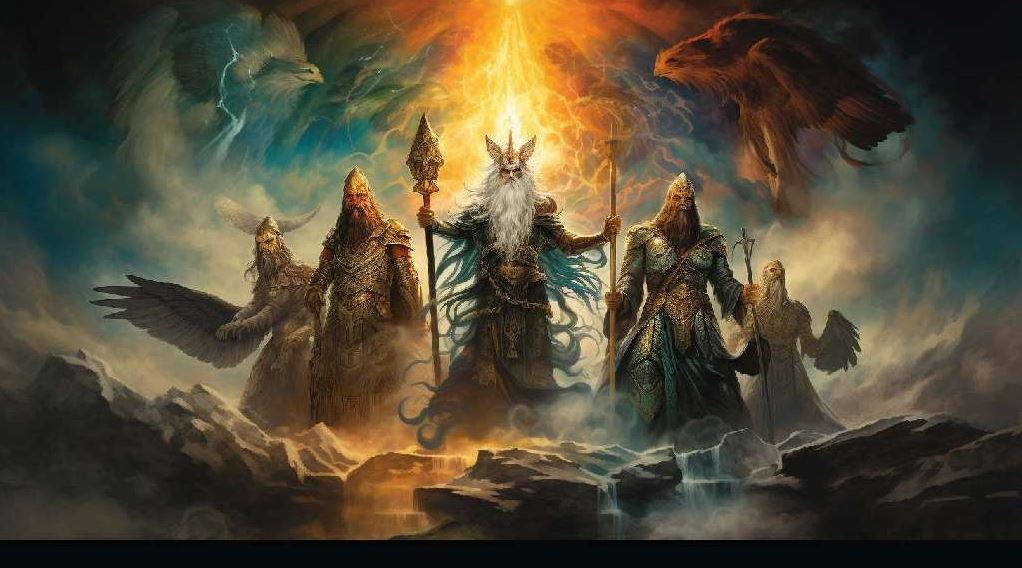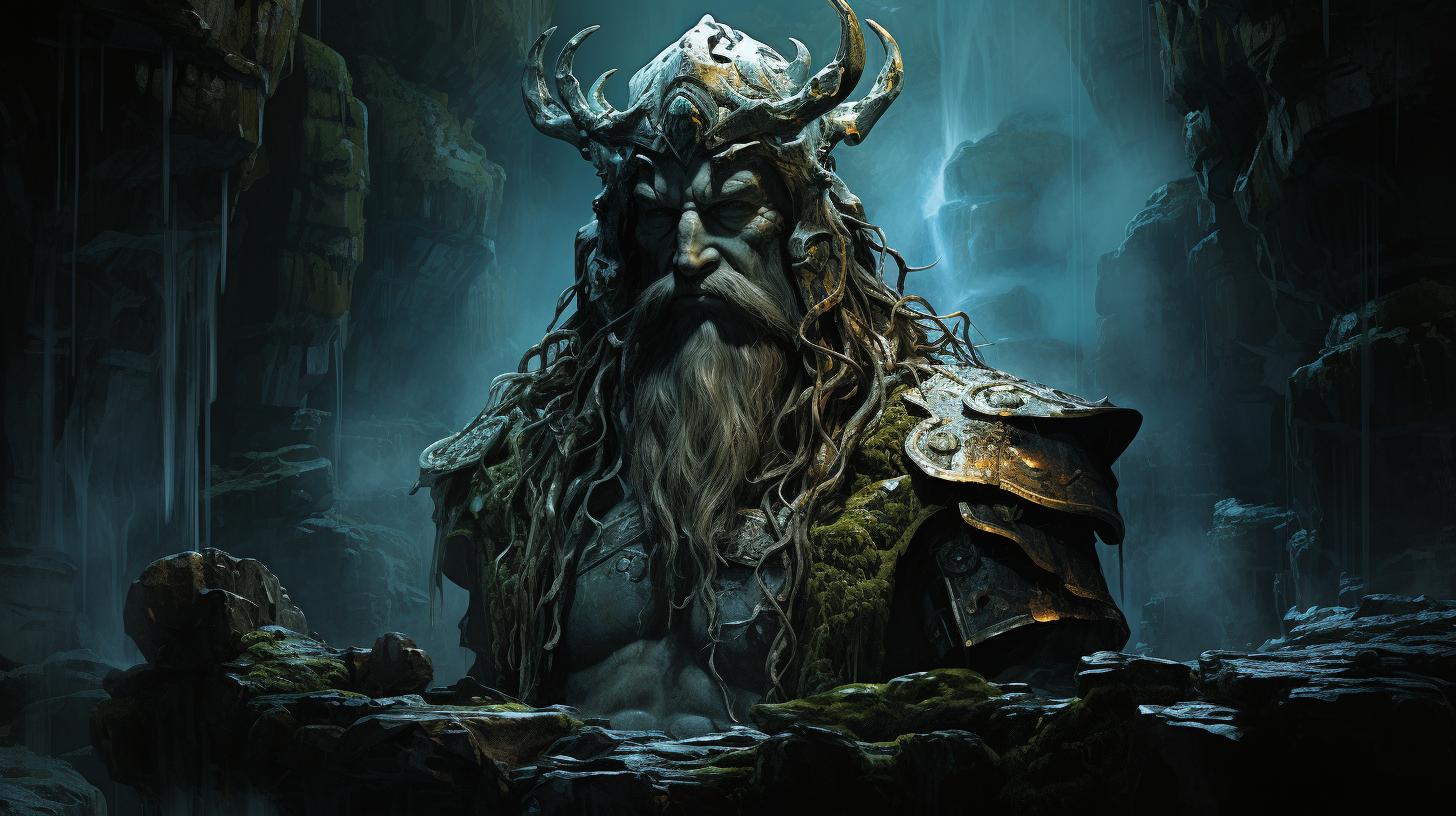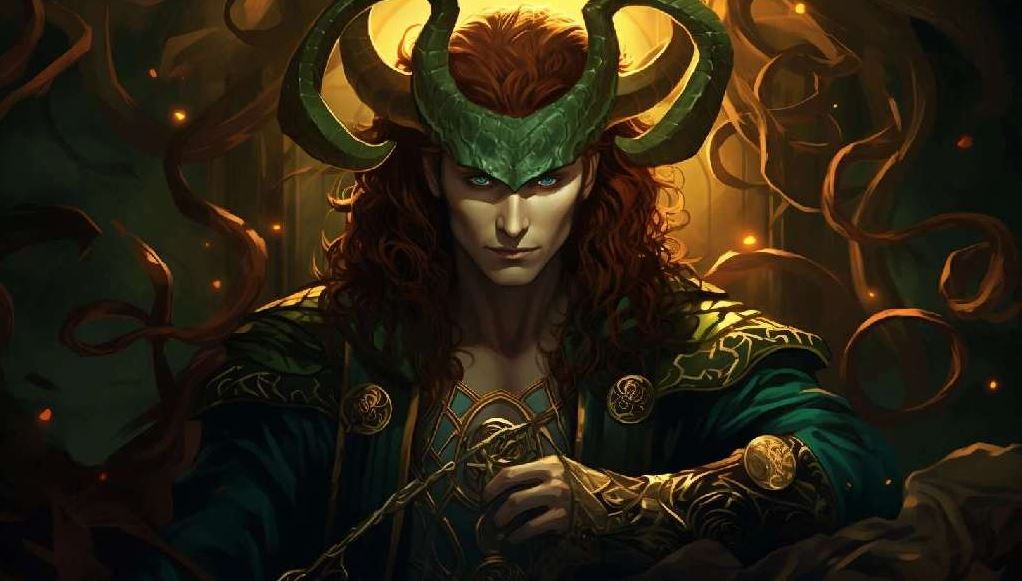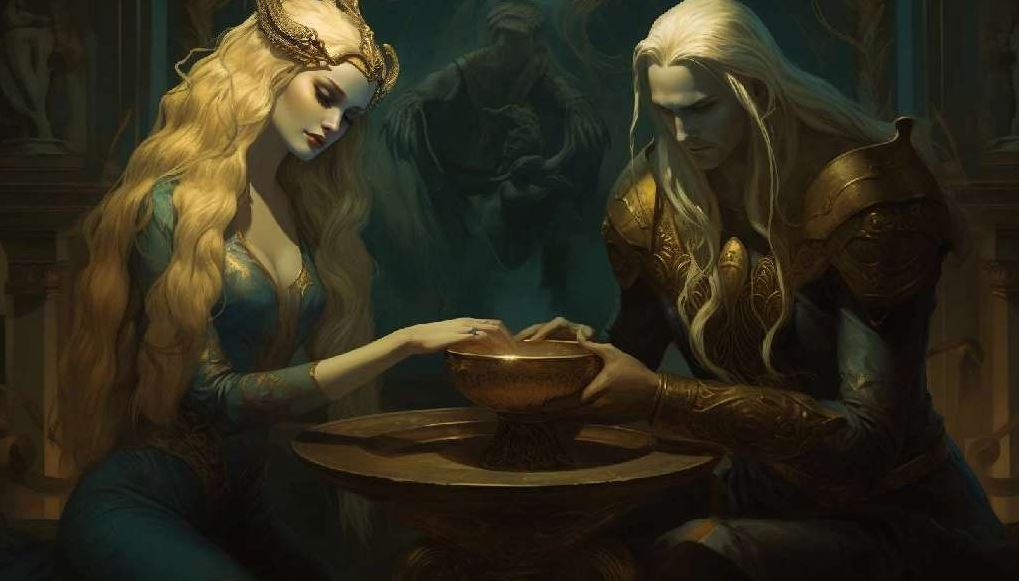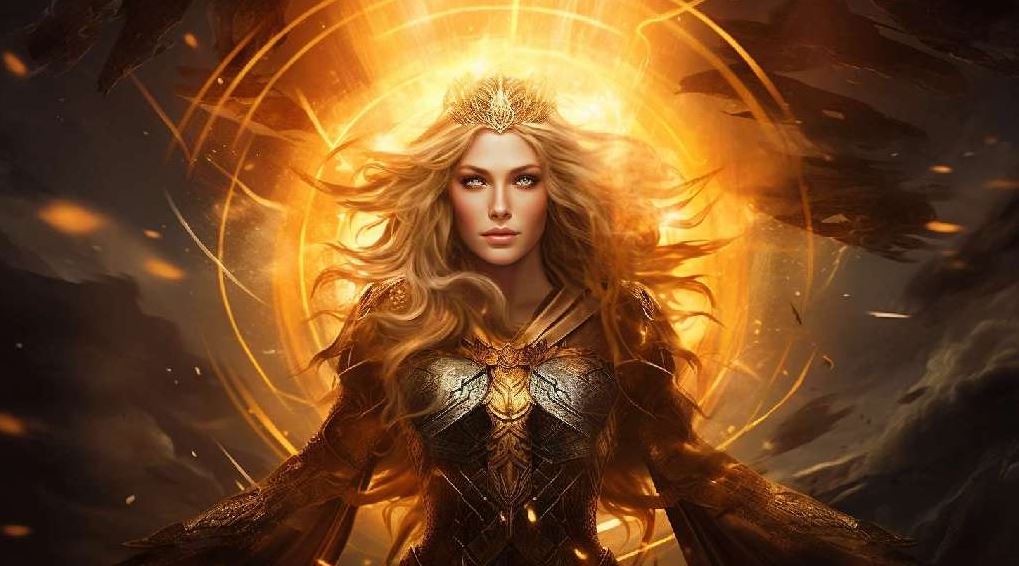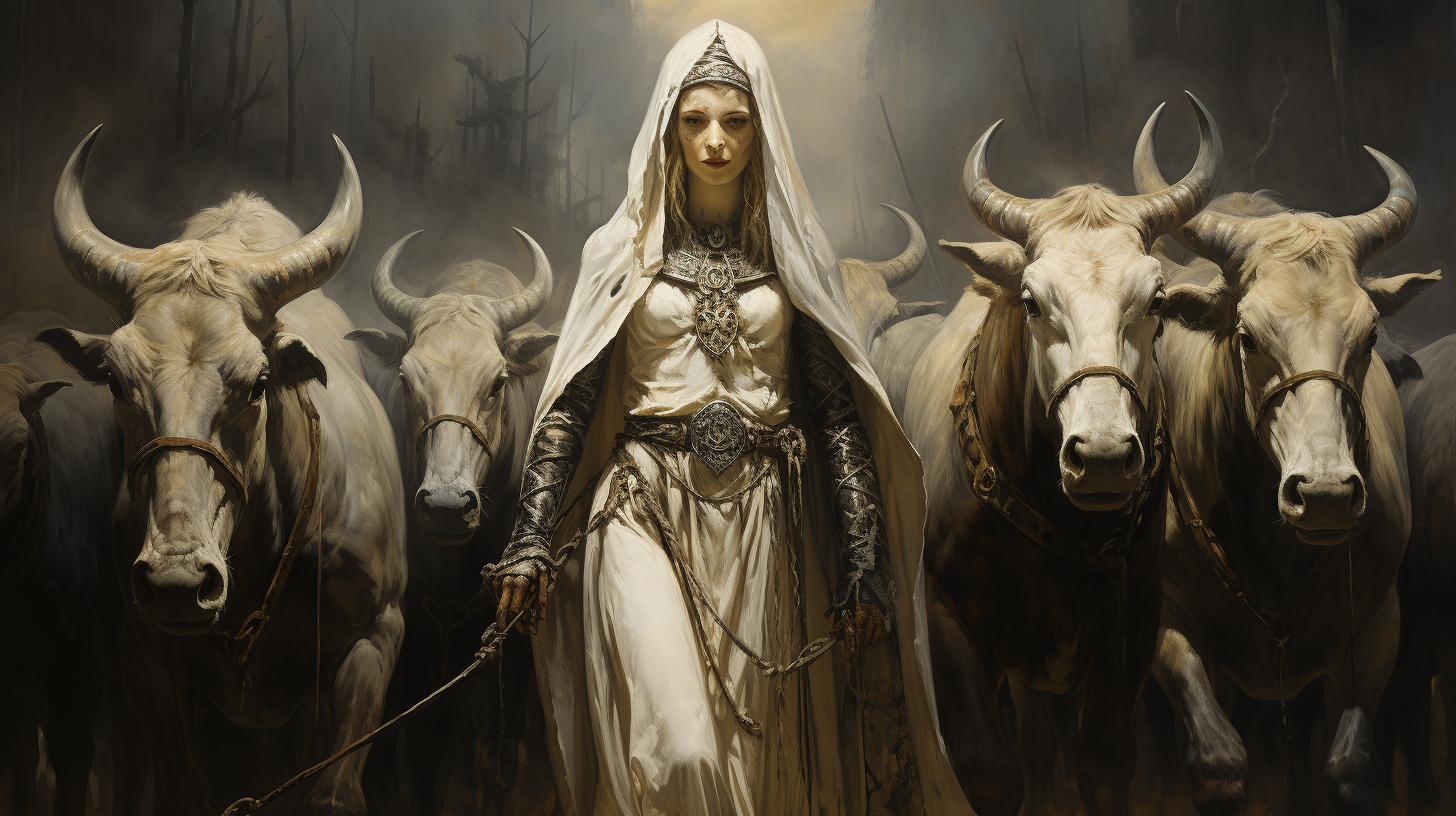Hlin Norse Goddess: Unveiling the Secrets of a Powerful Figure in Germanic Mythology

Hlin Norse goddess, a significant figure in Germanic mythology, holds connections to Frigg and serves as a protective deity. Mentioned in Norse mythology texts like the Prose Edda and Poetic Edda, her role as one of Frigg‘s three servants is to listen to prayers and offer solace to those in mourning.
With associations to motherhood and consolation, Hlin’s presence in Norse sources sheds light on the rich tapestry of mythological beliefs. In this article, we explore the attestations, scholarly interpretations, and modern influences surrounding Hlin’s enigmatic persona.
Attestations
The attestations of Hlin, a Norse goddess, can be found in various Norse mythology texts, providing insights into her significance and role in Germanic mythology.
Norse Mythology Texts
Hlin’s presence is mentioned in several Norse mythology texts, including the Prose Edda and the Poetic Edda. These ancient texts offer valuable information about Hlin’s attributes and associations, giving us a glimpse into her mythological influence.
Prose Edda
The Prose Edda, written by Snorri Sturluson in the 13th century, contains references to Hlin as one of the lesser-known Norse goddesses. The Prose Edda provides descriptions and narratives that help us understand Hlin’s role and significance within the pantheon of Norse deities.
Poetic Edda
The Poetic Edda, a collection of Old Norse poetic texts, also includes mentions of Hlin. These poems, attributed to various anonymous poets, shed light on Hlin’s connections to other deities and her involvement in mythological events, often through symbolism and metaphors.
By exploring these Norse mythology texts, we can gain a deeper understanding of Hlin’s place in the pantheon and her contributions to Germanic mythology.
Scholarly Reception and Interpretation
An examination of the historical context surrounding Hlin is crucial in comprehending her role in Norse mythology. Scholars analyze the cultural and social factors that influenced the conception of Hlin as a goddess and her interactions with other deities.
This exploration provides crucial insights into the beliefs and practices of ancient Germanic societies.
Comparative Mythology
Comparative mythology allows scholars to draw connections between different mythological traditions and explore similarities and differences between Hlin and similar deities in other cultures. By comparing Hlin’s attributes, roles, and narratives with those of goddesses from related mythologies, scholars gain a deeper understanding of her significance within the Norse pantheon.
Symbolism and Interpretations
Hlin’s symbolism and interpretations have captivated the interest of scholars. By examining her portrayal and symbolism in ancient texts, alongside archaeological artifacts and cultural contexts, researchers offer various interpretations of her role and significance.
These interpretations shed light on the multifaceted nature of Hlin and her impact on Norse mythology.
Modern Influence
The influence of Hlin, the Norse goddess, extends beyond ancient mythology and continues to resonate in modern times. Here are some significant aspects:
Neopaganism and Heathenry
In neo-pagan and heathen communities, Hlin is revered as a powerful deity associated with protection, comfort, and guidance. Many practitioners honor her through rituals, prayers, and offerings, seeking her assistance in times of distress and sorrow.
Cultural References in Art and Literature
Hlin’s enigmatic persona has caught the attention of artists and writers, inspiring their creative works. Her portrayed attributes of protection and consolation often find representation in various forms of art, literature, and even digital media.
Worship and Practices
Devotees of Hlin engage in worship practices that include setting up altars, offering flowers, candles, and other symbolic objects. They invoke her presence through meditation and ceremonies, seeking solace, guidance, and protection in their daily lives.
In conclusion, Hlin’s significance reaches beyond the boundaries of traditional mythology. She continues to captivate modern imaginations through spiritual devotion, artistic expressions, and a connection to the profound aspects of protection and solace that she represents.
See Also
When exploring the fascinating realm of Norse mythology, it is important to delve into other Norse goddesses and related mythological figures that provide further insights and connections. These include:
Other Norse Goddesses
- Frigg: Wife of Odin and associated with marriage, prophecy, and maternity.
- Fulla: A goddess connected to Frigg, known for her wealth and abundance.
- Lofn: Goddess of forbidden love and marriage, often sought for her intercession.
- Gná: A messenger goddess, riding her horse Hófvarpnir across the sky.
- Jörð: The personification of Earth, possibly related to Frigg.
Related Mythological Figures
- Baldr: Son of Frigg and Odin, known for his beauty, innocence, and tragic fate.
- Odin: Supreme god of the Norse pantheon, husband of Frigg, and associated with wisdom, war, and poetry.
- Thor: God of thunder and protector of humanity, known for his strength and battles against giants.
- Loki: Tricky and mischievous god, often causing trouble for the other deities.
These goddesses and mythological figures further enrich the tapestry of Norse mythology, offering different perspectives and connections to the enchanting world of Hlin and her divine counterparts.
Notes
- The Norse goddess Hlin plays a crucial role in Germanic mythology, particularly in connection with Frigg. Her presence can be found in various Norse mythology texts such as the Prose Edda and the Poetic Edda.
- Historical context sheds light on the significance of Hlin and her role as a protector and comforter.
Understanding the cultural and religious beliefs of the Norse people is essential in interpreting her importance.
- Comparative mythology allows for a deeper understanding of Hlin’s role and attributes. Exploring her associations and similarities with other mythological figures across different cultures provides valuable insights.
- Symbolism and interpretations of Hlin vary among scholars, emphasizing her role as a compassionate deity associated with consolation, protection, and the grieving process.
- Hlin’s influence extends into the modern era, particularly within neopagan and Heathen communities who revere and incorporate her into their worship and practices.
- Art, literature, and cultural references continue to be influenced by the rich mythology surrounding Hlin, showcasing her enduring legacy and fascination in contemporary society.
References
When studying the Norse goddess Hlin, it is essential to refer to reliable sources that provide valuable insights into her existence and significance.
The following references offer a wealth of knowledge for those interested in exploring the various aspects of Hlin and her connection to Norse mythology:
- Norse Mythology Texts: In-depth examination of Hlin can be found in numerous prominent Norse mythology texts, including the Prose Edda and the Poetic Edda.
- Historical Context: Scholars have extensively analyzed the historical context surrounding Norse mythology and the role of Hlin within it.
- Comparative Mythology: Exploring the connections and similarities between Hlin and other mythological figures from different cultures can shed light on her broader significance.
- Symbolism and Interpretations: Various scholarly works offer interpretations of Hlin’s symbolism and her role in different mythological narratives.
- Neopaganism and Heathenry: References delve into how Hlin continues to be worshipped and revered by modern practitioners of neopaganism and Heathenry.
- Cultural References in Art and Literature: The influence of Hlin on artistic representations, literature, and popular culture is examined in numerous works.
- Worship and Practices: References explore the rituals, practices, and devotional aspects associated with Hlin as worshipped by contemporary followers.
By consulting these references, researchers, enthusiasts, and individuals keen on learning more about Hlin can deepen their understanding and appreciation of this intriguing Norse goddess.
Hlín
Hlín, also known as Hlín the Norse Goddess, is a mysterious deity in Norse mythology with significant associations to Frigg. This section delves into Hlín’s role and attributes, her close connections to Frigg, and her representation in various Norse sources.
Role and Attributes
Hlín is recognized as a goddess of consolation and protection. Her primary function is to safeguard those whom Frigg wishes to save, offering solace and support to those in mourning.
Poets often utilized her name as a synonym for “woman” in their compositions, highlighting her association with femininity and compassion.
Associations with Frigg
In the realm of Norse mythology, Hlín is considered to be closely linked to Frigg. While there is ongoing scholarly debate regarding their exact relationship, some view Hlín as an associated goddess, while others perceive her as an alternate name for Frigg herself.
Regardless, it is evident that Hlín plays a significant role as one of Frigg‘s three handmaidens, alongside Fulla and Gna.
Representation in Norse Sources
The portrayal of Hlín in Norse sources, particularly in texts like the Völuspá, raises questions about her individuality versus her connection to Frigg. Some scholars believe that Hlín is merely another name for Frigg, while others argue that she represents a distinct entity within the mythological pantheon.
Regardless, Hlín’s presence serves to emphasize the importance of protection and consolation in Norse mythology.
Etymology
The etymology of the name “Hlin” sheds light on its origins and possible meanings. The word “Hlin” is derived from Old Norse and is believed to be connected to the Norse word “hlynr,” which translates to “arce” in English.
This linguistic association suggests a potential connection to the protective qualities attributed to the goddess Hlin.
Exploring the linguistic roots further, we find that the name Hlin shares a common origin with related names such as Frīja, Frīg, and Frīa. These names can all be traced back to the proto-Germanic language.
As with many names in Norse mythology, the precise meaning of Hlin is not definitively known. However, considering its potential link to the word “arce,” it is plausible to speculate that Hlin may embody the idea of protection or shelter.
The etymology of Hlin provides a starting point for understanding the possible symbolism and significance of this goddess in Norse mythology. By examining the linguistic heritage and related names, we can gain insight into the ancient beliefs and cultural context surrounding the enigmatic figure of Hlin.
..












